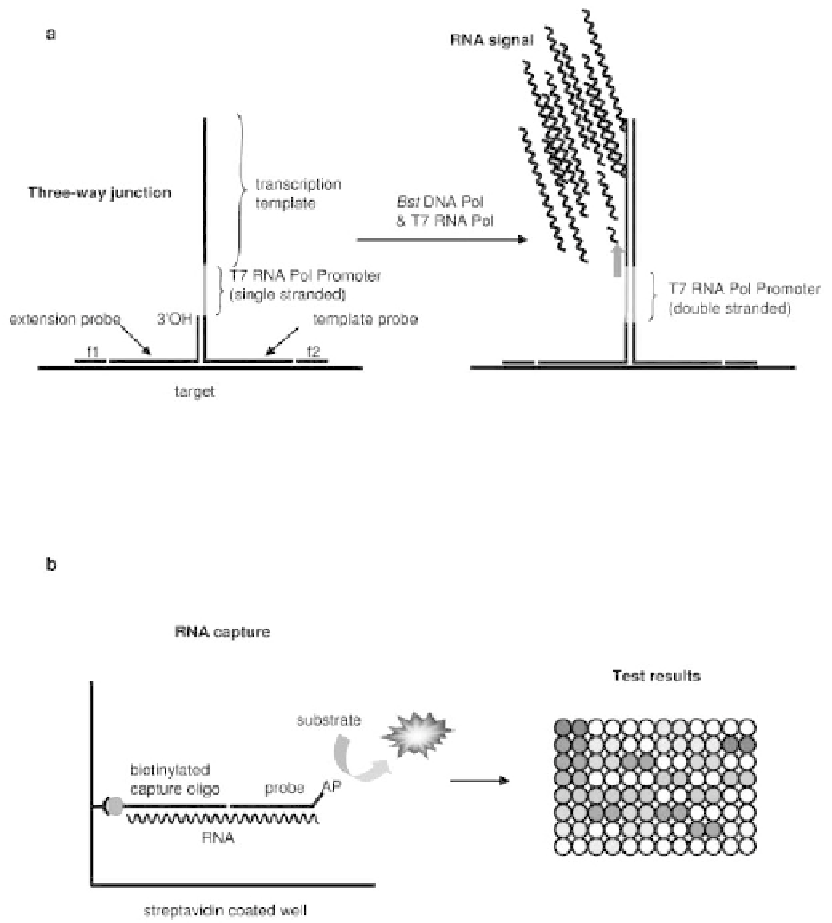Biology Reference
In-Depth Information
Figure 11:
The SMART assay. (a) Specifi c probes hybridise with the target to form a three-way junction (3WJ), assisted by
facilitator probes (f1 & f2). The 3WJ initially contains a single-stranded, inactive T7 RNA polymerase promoter sequence. The
promoter is made double-stranded (active) by extension (by
Bst
DNA polymerase) off the 3' of the extension probe, leading
to the generation of large amounts of RNA signal (by T7 RNA polymerase), which may itself be amplifi ed if required. (b)
Detection of RNA signal by ELOSA (Enzyme Linked OligoSorbant Assay). The assay uses 2 specifi c probes: a biotinylated
capture probe and enzyme (Alkaline phosphatase, AP) linked detection probe. Non-specifi c nucleic acid and 3WJ probes are
removed, following binding in a streptavidin coated well, and RNA signal is detected via a colour change. Quantifi cation
of signal takes place in a 96 well plate, allowing multiple samples to be analysed simultaneously. With the kind permission
of S.D. Wharam, Bigelow Laboratory for Ocean Sciences, 180 McKown Point, West Boothbay Harbor, Maine 04575, USA.
[Wharam
et al
. (2007)
Virology Journal
4:
52. doi:10.1186/1743-422X-4-52].

